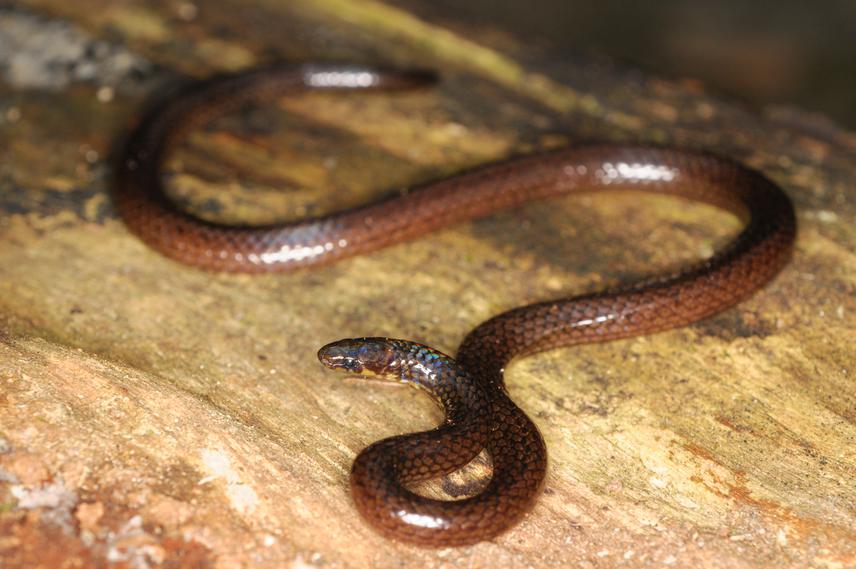Sang Ngoc Nguyen
This project aims to test a “capture-analysis-release” approach that allows for successful fauna research on reptiles in Vietnam without killing.

Calamaria pavimentata, a very rare snake in Vietnam. This individiual was released after identification.
In Vietnam, herpetological research currently involves the collecting of animals and voucher specimens. Three animals can be collected legally for each species. The importance of voucher specimens is universally accepted. However, some groups, especially snakes, are very rare in nature. Here, I suggest a trial “capture-analysis-release” approach that allows for successful fauna research on reptiles without killing. Detailed photos, counts, and measurements will be taken in the field. Before release, animals will be marked by clipping scales or tip of tail.
The work will be conducted at Hon Ba Nature Reserve (~ 19,000ha, highest peak 1578m a.s.l., about 350km from Hochiminh City), Khanh Hoa Province, southern Vietnam. Except for some new species descriptions, the reptile fauna in the area has not been surveyed completely and published officially.
The following outcomes of the project are expected:
A detailed method: If the method is used successfully, it will be introduced to other herpetologists.
Basic results on list of reptiles, current status of each species, and threaten factors on the fauna will constitute the final product. Additionally, “type” photos for each species will also be available. All these basic data will be provided for the Nature Reserve for management and conservation activities.
Published paper on academic journal: This will be an official acceptance for the method and the accuracy of the results evaluated by other experts. The paper should be an important citation for people who want to apply or require the approach.
Trained local ranger: When the project finished, the Nature Reserve will have one ranger who understands well the fauna, including species identification, habitat, and ecological roles. This will be an advantage for the local manager to define management and conservation strategies in the area.
Photos and data: will be provided freely for the Nature Reserve and used for the next state.